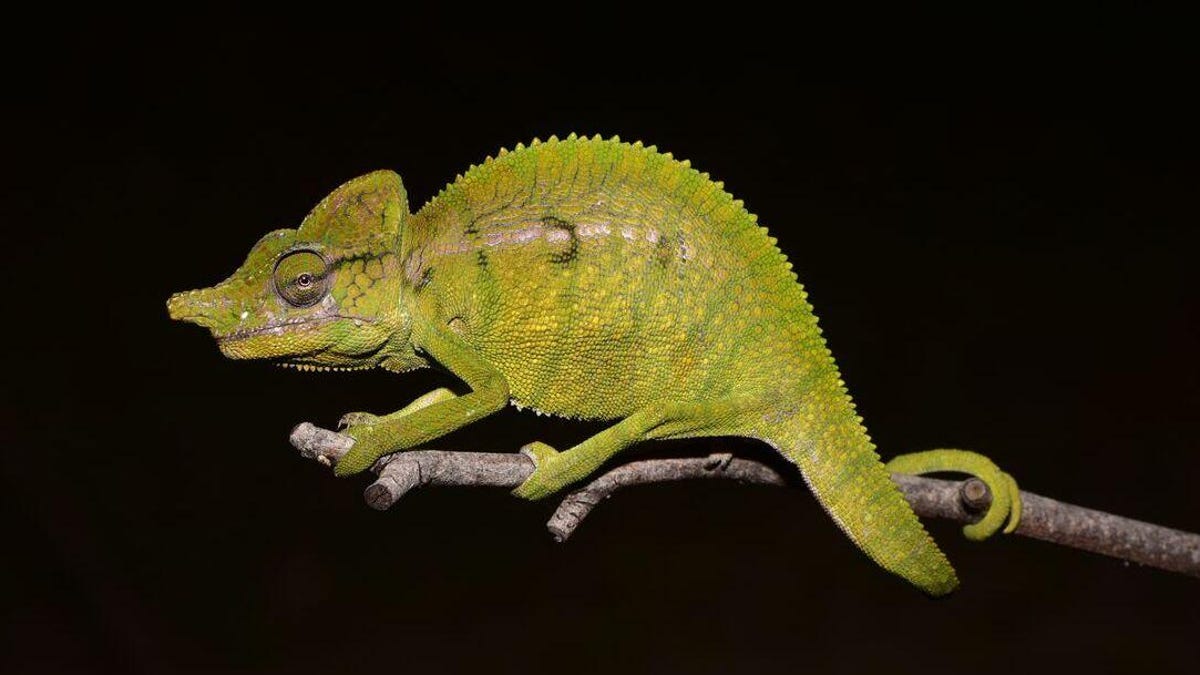Lost chameleon last seen in 1913 rediscovered in all its color-changing glory
Voeltzkow's chameleons are like living mood rings.

The male Voeltzkow's chameleon sports a greener look than the females.
A decades-long disappearance has been solved. Researchers rediscovered the elusive Voeltzkow's chameleon in Madagascar. It was last seen in 1913, before World War I.
Conservation group Global Wildlife Conservation (GWC) announced the extraordinary find on Friday. The chameleon was spotted during a 2018 expedition, but Friday's announcement coincides with the publication of a paper on the lizard in the journal Salamandra.
"I thought we might have a good chance of rediscovering Voeltzkow's chameleon, but I was surprised that it took so long and that it was so difficult," said expedition lead and lead author Frank Glaw of Zoologische Staatssammlung München in Germany.
A female chameleon shows off her colorful patterns.
The male chameleons wear a cheery green look, but the females are the stars of the show. They sport exotic patterns flecked with bright colors, including shades of blue, red, purple and orange. "The females can change color depending on their 'mood,' and the number of red dots on their flanks varies by individual," GWC said.
The team released a video of the rare reptiles in the wild. The footage includes a sensational slow-motion shot of a chameleon grabbing an insect snack along with examples of how the females change colors.
The lizards' short life spans and remote environment had helped to keep them hidden for decades, but the expedition found over a dozen of the chameleons.
Voeltzkow's chameleon was on a most-wanted list of lost species maintained by GWC. Earlier this year, the organization announced the rediscovery of a rare elephant-shrew that was also on the list.
Said GWC president Don Church, "The Voeltzkow's chameleon adds color and beauty to the planet, and reminds us that even when all seems lost, a great adventure can rekindle hope even for species we haven't seen since Woodrow Wilson was president."

